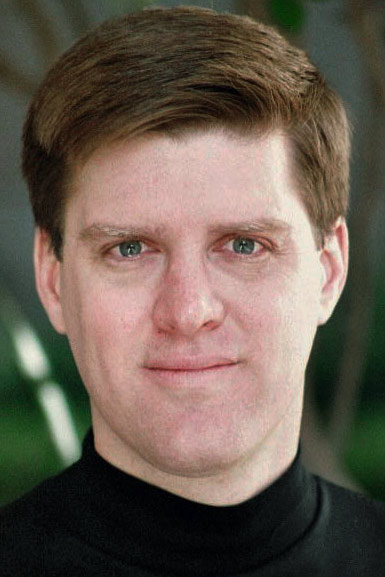

 Anyone seeking to honor a groundbreaking contribution toward a better online world should submit a nomination for the 2014 M3AAWG J. D. Falk Award. Presented to people whose work on specific projects made the Internet a safer, more collaborative, more inclusive place, the J. D. Falk Award has recognized leaders and pioneers who saw elements of the online experience that needed improvement and took action to fix them.
Anyone seeking to honor a groundbreaking contribution toward a better online world should submit a nomination for the 2014 M3AAWG J. D. Falk Award. Presented to people whose work on specific projects made the Internet a safer, more collaborative, more inclusive place, the J. D. Falk Award has recognized leaders and pioneers who saw elements of the online experience that needed improvement and took action to fix them.
 Have you ever found yourself blocked by a snowshoe spam filter or listed on a snowshoe blacklist? Or perhaps you've been told that one of your mailing practices makes you look like a snowshoe spammer? If so, you're probably wondering what snowshoe spam is, what you're doing to earn this reputation and what you should be doing differently. Here's a brief overview of the history of snowshoe and some suggestions on how to avoid being mistaken for a snowshoe spammer.
Have you ever found yourself blocked by a snowshoe spam filter or listed on a snowshoe blacklist? Or perhaps you've been told that one of your mailing practices makes you look like a snowshoe spammer? If so, you're probably wondering what snowshoe spam is, what you're doing to earn this reputation and what you should be doing differently. Here's a brief overview of the history of snowshoe and some suggestions on how to avoid being mistaken for a snowshoe spammer.
 One of the hottest topics in the email biz these days (insofar as any topic is hot) is how we will deal with mail on IPv6 networks. On existing IPv4 networks, one of the most effective anti-spam techniques is DNSBLs, blackists (or blocklists) that list IP addresses that send only or mostly spam, or whose owners have stated that they shouldn't be sending mail at all. DNSBLs are among the cheapest of anti-spam techniques since they can be applied to incoming mail connections without having to receive or filter spam.
One of the hottest topics in the email biz these days (insofar as any topic is hot) is how we will deal with mail on IPv6 networks. On existing IPv4 networks, one of the most effective anti-spam techniques is DNSBLs, blackists (or blocklists) that list IP addresses that send only or mostly spam, or whose owners have stated that they shouldn't be sending mail at all. DNSBLs are among the cheapest of anti-spam techniques since they can be applied to incoming mail connections without having to receive or filter spam.
 Everyone who's been in the e-mail biz long enough knows the term FUSSP, Final Ultimate Solution to the Spam Problem, as described in a checklist from Vern Schryver and a form response that's been floating around the net for a decade. FUSSPs fall into two general categories, bad ideas that won't go away, and reasonable ideas that are oversold.
Everyone who's been in the e-mail biz long enough knows the term FUSSP, Final Ultimate Solution to the Spam Problem, as described in a checklist from Vern Schryver and a form response that's been floating around the net for a decade. FUSSPs fall into two general categories, bad ideas that won't go away, and reasonable ideas that are oversold.
 Canada's Anti-Spam Law, CASL, is now a done deal. Last Thursday, Treasury Board of Canada President (and champion of CASL) Tony Clement approved Industry Canada regulations in their final form. Today, Minister of Industry the Honourable James Moore announced CASL will come into force in July 1, 2014.
Canada's Anti-Spam Law, CASL, is now a done deal. Last Thursday, Treasury Board of Canada President (and champion of CASL) Tony Clement approved Industry Canada regulations in their final form. Today, Minister of Industry the Honourable James Moore announced CASL will come into force in July 1, 2014.
 In 2010 the Messaging, Malware and Mobile Anti-Abuse Working Group (M3AAWG) and the Internet industry as a whole lost a great friend and supporter, Mary Litynski. Her dedication, excellence, perseverance and tireless work behind the scenes of M3AAWG helped make the organization the success that it is today. Through this award, M3AAWG seeks to bring attention to the remarkable work that is done far from the public eye over a significant period of time...
In 2010 the Messaging, Malware and Mobile Anti-Abuse Working Group (M3AAWG) and the Internet industry as a whole lost a great friend and supporter, Mary Litynski. Her dedication, excellence, perseverance and tireless work behind the scenes of M3AAWG helped make the organization the success that it is today. Through this award, M3AAWG seeks to bring attention to the remarkable work that is done far from the public eye over a significant period of time...
 At the recent Anti-Phishing Working Group meeting in San Francisco, Rod Rasmussen and I published our latest APWG Global Phishing Survey. Phishing is a distinct kind of e-crime, one that's possible to measure and analyze in depth. Our report is a look at how criminals act and react, and what the implications are for the domain name industry.
At the recent Anti-Phishing Working Group meeting in San Francisco, Rod Rasmussen and I published our latest APWG Global Phishing Survey. Phishing is a distinct kind of e-crime, one that's possible to measure and analyze in depth. Our report is a look at how criminals act and react, and what the implications are for the domain name industry.
 People hate receiving spam, but most people stopped obsessing about spam a decade ago or more. In the interim, anti-spam filters have improved dramatically. Still, some anti-spammers hate spam so passionately -- or, perhaps, hope to put a little coin in their pockets -- that we still see a steady stream of lawsuits against email marketers. For the most part, those lawsuits don't win; in the past half-decade, repeat anti-spam plaintiffs have rarely won in court.
People hate receiving spam, but most people stopped obsessing about spam a decade ago or more. In the interim, anti-spam filters have improved dramatically. Still, some anti-spammers hate spam so passionately -- or, perhaps, hope to put a little coin in their pockets -- that we still see a steady stream of lawsuits against email marketers. For the most part, those lawsuits don't win; in the past half-decade, repeat anti-spam plaintiffs have rarely won in court.
 Spam Arrest is a company that sells an anti-spam service. They attempted to sue some spammers and, as has been widely reported, lost badly. This case emphasizes three points that litigious antispammers seem not to grasp: Under CAN SPAM, a lot of spam is legal; Judges hate plaintiffs who try to be too clever, and hate sloppy preparation even more; Never, ever, file a spam suit in Seattle.
Spam Arrest is a company that sells an anti-spam service. They attempted to sue some spammers and, as has been widely reported, lost badly. This case emphasizes three points that litigious antispammers seem not to grasp: Under CAN SPAM, a lot of spam is legal; Judges hate plaintiffs who try to be too clever, and hate sloppy preparation even more; Never, ever, file a spam suit in Seattle.
 Today we publish an overview of domains registered through Domain Silver, Inc, a registrar operating in the .pl domain. This Registrar started operating in May 2012. Since that time, the CERT Polska team started to observe a large increase in the amount of malicious domains registered in .pl and to receive many complaints concerning domains registered through Domain Silver.
Today we publish an overview of domains registered through Domain Silver, Inc, a registrar operating in the .pl domain. This Registrar started operating in May 2012. Since that time, the CERT Polska team started to observe a large increase in the amount of malicious domains registered in .pl and to receive many complaints concerning domains registered through Domain Silver.